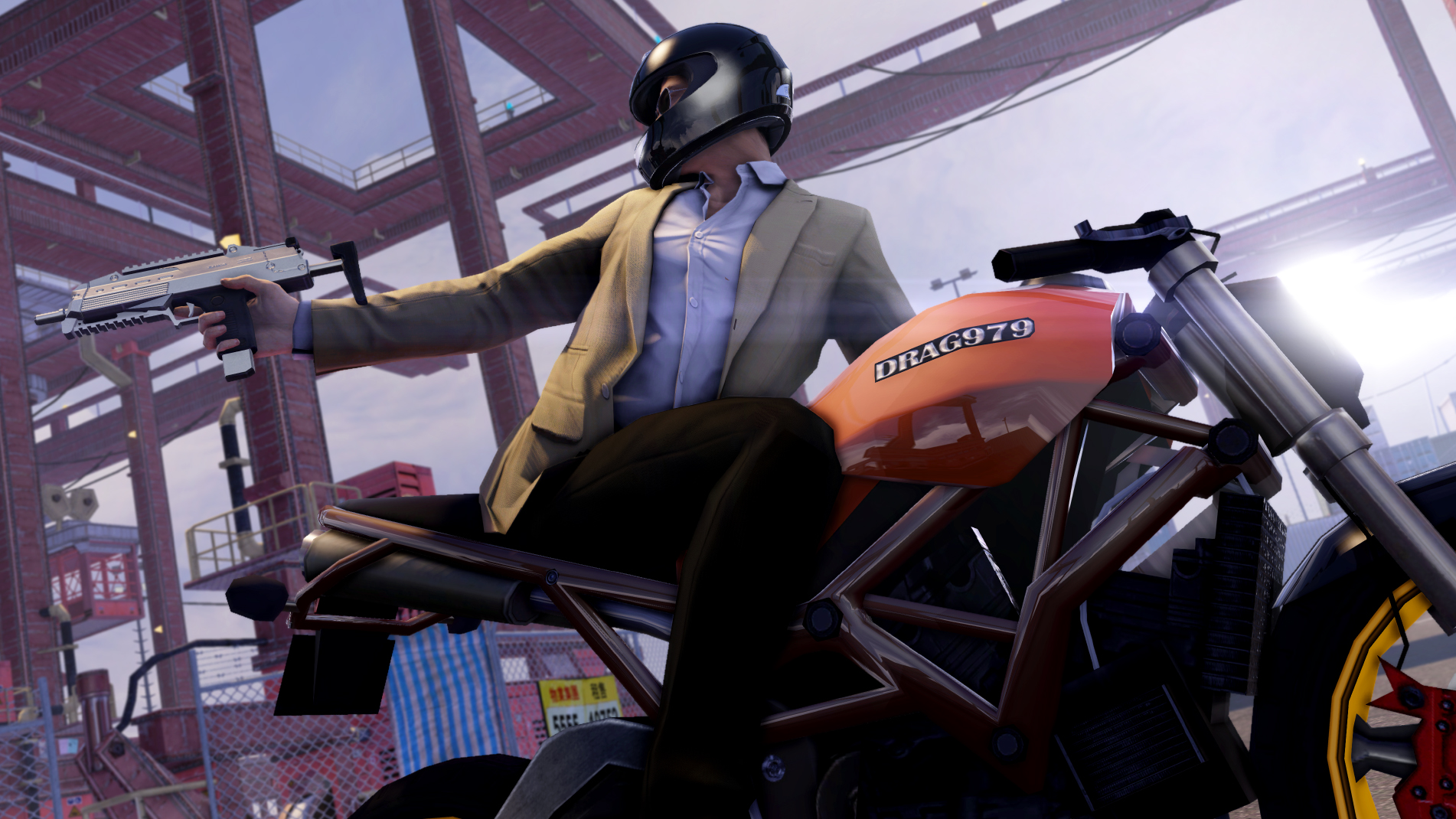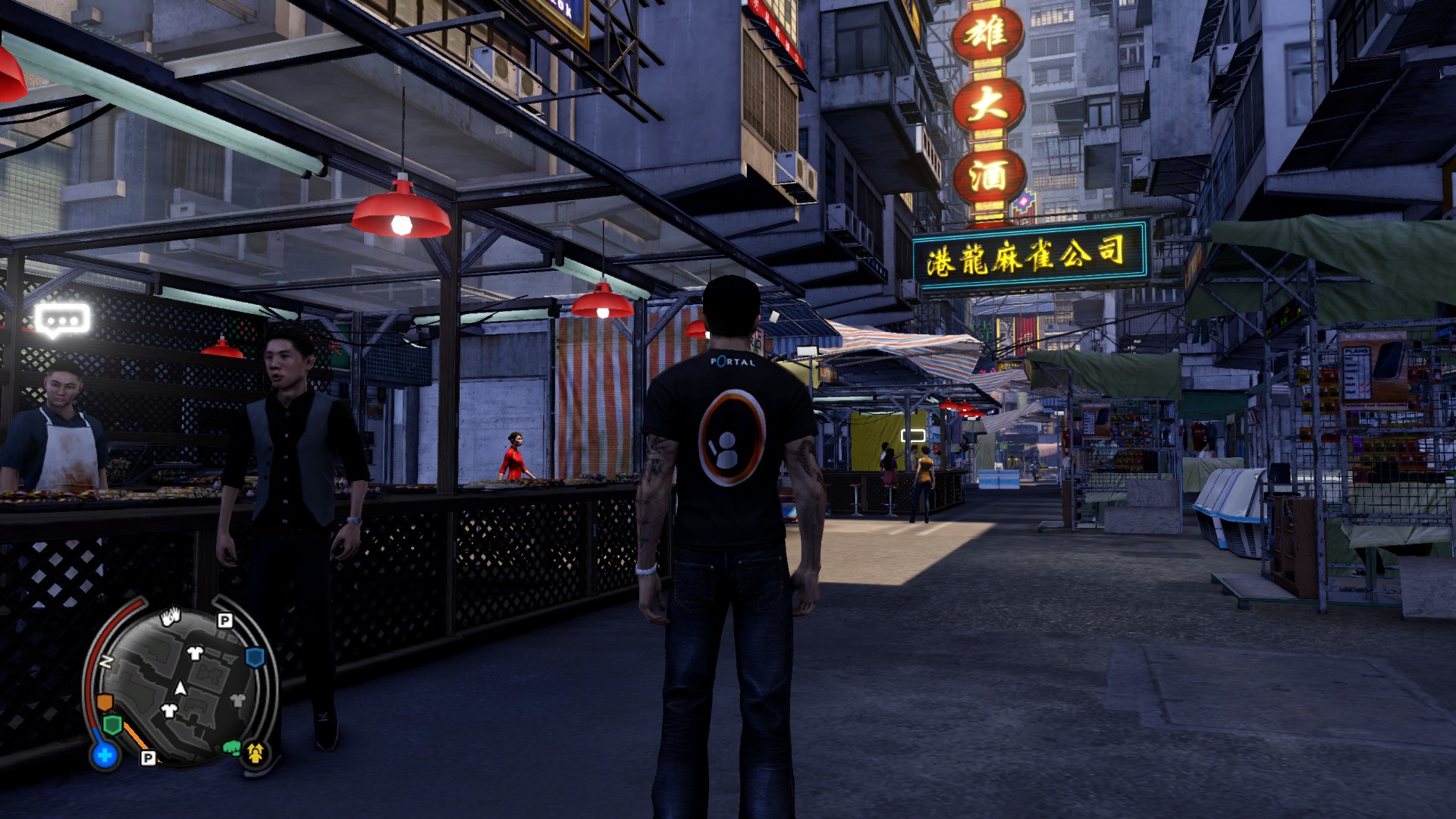Weaving through the streets of Hong Kong with Sleeping Dogs’ designer
Let Sleeping Dogs lie?

This is a re-published article that we've picked as one of our favorites of the last year from our suite of TechRadar Originals.
I’m running after a bandit through North End’s night market, crashing over colorful stalls and sending skewers of meat flying as onlookers shout in Cantonese. I catch up to my target in a dusty alley packed with dumpsters and scattered bin bags, and I’m suddenly surrounded by thugs. I grab one, knee him in the stomach, and smash his head into a whirring air-conditioner, spraying blood on its spinning white fans.
Five minutes later, I’m weaving through traffic on my motorbike, staring up at the neon signs. I park up on the east coast of Honk Kong Island, away from the traffic and noise, and amble down a wooden dock. Houseboats bob slowly up and down, a fisherman flicks bait into the water, and an old man slowly sweeps dust from the boards. Peace at last.
Sleeping Dogs’ open world is one of my favorite in gaming. It captures the variety, buzz and character of Hong Kong as well as any action movie, and the setting feels as believable now as it did when it came out in 2012. I wanted to find out how the now-defunct United Front Games managed to capture this world, so I spoke to design director Mike Skupa, who told me about the “battle” between making a fun, accessible game and recreating Hong Kong faithfully – and how a trip to the city changed the way the team thought about its world.
Compact cities and idyllic islands

Sleeping Dogs’ skyscrapers give the impression of a huge open world, but the map is fairly compact. It only has four of Hong Kong Island’s neighborhoods – Kennedy Town, North Point, Central and Aberdeen – and they’re much smaller and closer together than their real-life counterparts. If you floor it, you can drive between the southern and northern tips in five minutes flat.
Skupa says that, initially, the team envisaged a larger map encompassing other parts of Hong Kong, but decided to stick with just the Island to give it a more “focused” feel.
“We wanted Sleeping Dogs to be a very focused open world game,” he told me. “We wanted the activities to be connected to the story – the goal wasn’t to have a 100-hour, sprawling game.
Get daily insight, inspiration and deals in your inbox
Sign up for breaking news, reviews, opinion, top tech deals, and more.
“We chose the areas that we felt would work well with the game design, and by setting most of it by the coast it allowed us to really condense everything.”
By keeping the map manageable, the team could pack it with personality. It feels constantly busy, even at night. Cars honk in traffic, passers-by talk on their phones in the local language, and thugs, itching for a fight, lurk beneath overpasses. And yes, not every street is full of life, but clever design choices steer players towards the best bits.
“We designed the neighborhoods around set-piece locations, where key missions would take place, and we were strategic with roadways and travel routes, so that on an average playthrough people would experience locations that the team put the most effort into,” Skupa explains. “The night market in North springs to mind: that early-game chase makes me want to return whenever I’m in the area.
“You can put so much time into every little nook and cranny, but for us, just based on budget, timelines and the fact we really wanted set-piece moments, it was important to create that balance.”
Love thy neighor(hoods)

All the neighborhoods look and feel distinct. North End has tight alleys with smoke rising from vents, and shouting food vendors. Kennedy Town, in contrast, has clean streets lined with palm trees and shiny, glass-fronted buildings. The way people dress, the cars they drive, the setup of the, ahem, ‘massage parlours’, either on street corners or inside larger businesses… it all changes as you move between locales, which creates a sense of place. Within two minutes, you can tell the kind of people that would live in each neighborhood.
And yes, lots of Hong Kong’s landmarks are missing, others are heavily altered, and more still are in the wrong place… but it captures the character of the city. The little details matter: the phone boxes, for example, look exactly like the real thing, as do the rubbish bins, street signs and road markings. Plus, the distinctive ‘clack-clack’ crossing signal is uncanny.
Skupa says the team combined elements from different neighborhoods and time periods, creating an amalgam of modern-day, real-life Hong Kong and the dramatized version you’ll see in ‘70s and ‘80s action movies. The team thought about adding Kowloon – a Hong Kong cinema staple – but instead decided to just take bits of it and put them in North End, for example.
“I wouldn’t say the game is a true representation of the locations, so it was nice to hear that we captured the energy,” he says. “People even told us that they grew up in Hong Kong and hadn’t been back in a while, and playing was like visiting home. That was quite touching.”
People even told us that they grew up in Hong Kong and hadn’t been back in a while, and playing was like visiting home. That was quite touching.
Mike Skupa - Design Director
That attention to detail stemmed from United Front Games’ visit to Hong Kong during development. The art team visited the city for a week early on to take thousands of photographs, and the design team flew out a few months later to walk the streets and interview locals. They spoke to ex-triad members, security consultants, and people associated with the police, as well as music industry contacts, who helped with both the story and the in-game audio.
Those visits transformed the way the game was made. Skupa cites the smells of each neighborhood, the pace at which people walked, and the “constant whirring of air conditioners” as things they couldn’t have picked up through the pictures and videos they’d been studying. The local fashion caught his eye, too, and the team photographed and filmed people from different social backgrounds, so they could later create their own in-game versions of the clothing brands.
“Our character designs seemed instantly outdated, as they borrowed a lot from genre films of the past and our own surroundings,” he tells me. “We realized that our clothing choices didn't match the humidity. Our characters were… overdressed. Some of those legacy designs remained, which is why you’ll see some characters fighting in hot humid nights with puffy jackets.”
Authenticity vs fun

Sleeping Dogs was never just about authenticity. Skupa talks about walking the “fine line” between creating an accessible, fun game and something faithful to the city, and I think they got the balance right. Yes, the story is exaggerated, but it never feels too much like a caricature. Skupa says the events were inspired by tales the team heard out in Hong Kong: “You’d hear what happened with the triads, or with a particular political figure, and weave them into the story.”
The violent combat doesn’t simply exist so you can beat people up, either – it gives you a greater sense of what the world is like. It’s heavy on environmental action, and you can dump goons in dumpsters, kick them into phone boxes or bash their head into a urinal, which makes the violence feel like a part of the setting.
“It helped you focus on why you’re fighting here, what’s going on, who’s living here,” Skupa says. “Hopefully, even thinking at times: who’s going to clean up here? The team had a lot of fun with that.”
Skupa says managing the game’s scope was “always an issue”, and that “balancing density with gameplay and camera freedom was a huge design challenge”. He also says the team didn’t have as much time as they’d hoped to work on late-game areas, which gives them less “distinct nuance and feel”. But it’s hard to be too critical: despite its limitations, Sleeping Dogs feels like it’s both faithful to the source material and damn good fun to play.
Nearly seven years later, I still love getting lost in the streets of virtual Hong Kong.
- Best PS4 games 2019: the PlayStation 4 games you need to play